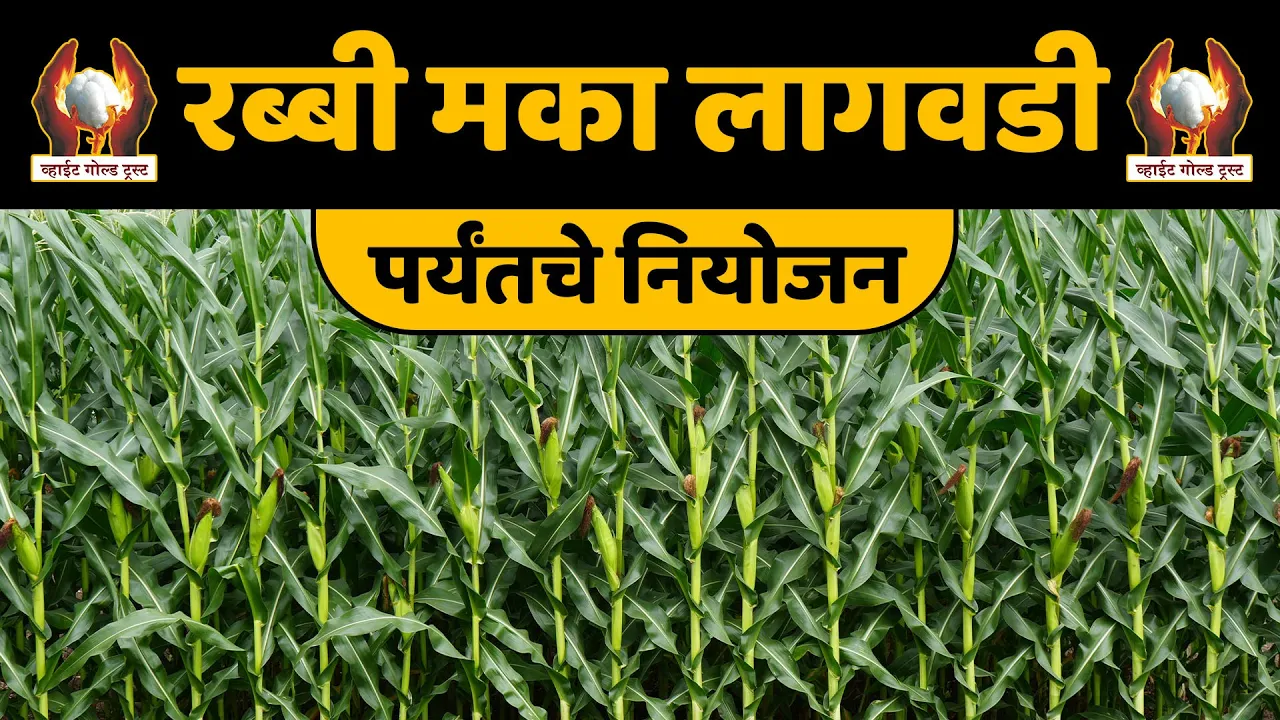Complete Planning for Rabi Maize Cultivation

Introduction
Maize is one of the most important and profitable crops of the Rabi season. Proper planting methods, seed treatment, fertiliser management, weed control and timely spraying can significantly increase production. In this blog, we will understand the complete step-by-step planning required from sowing to early growth of Rabi maize.
1. Planting
Planting distance varies according to the duration of the selected maize variety.
For medium and late-duration varieties
-
Row spacing: 60 to 75 cm
-
Plant spacing: 20 to 25 cm
For early-duration varieties
-
Row spacing: 60 cm
-
Plant spacing: 20 cm
Seed rate
-
6 to 8 kg of seed per acre is sufficient.
2. Seed Treatment
Seed treatment is essential for better germination and early crop health. It can be chemical or biological.
A) Chemical Seed Treatment
-
Rihansh – 5 ml
-
Jormet – 3 ml
or -
Pixel – 2 g
B) Biological Seed Treatment
-
Rihansh – 5 ml
-
Trichoboost – 5 g
-
NPK Boost DX – 5 g
3. Fertiliser Management
Proper nutrient supply enhances maize yield. Apply fertilisers at the following stages:
At the time of sowing/planting
-
10:26:26 or 09:24:24 or 8:21:21 – 2 bags
-
Zinc sulphate – 10 kg
-
Raiser-G – 10 kg
-
NPK Boost DX – 500 g
20 to 30 days after sowing
-
Urea – 1 bag
-
P-BOOST DX – 500 g
40 to 50 days after sowing
-
Urea – 25 kg
-
K LIFT DX – 500 g
(Per acre)
4. Water Management
Provide irrigation at the following critical stages:
-
20 to 40 days after sowing – crop growth stage
-
40 to 60 days – flowering stage
-
75 to 95 days – grain filling stage
At all these stages, protective irrigation is necessary.
5. Weed Management
Timely weed control prevents yield loss.
Pre-emergence
-
Atrazine (50%) – 1 kg per acre
Post-emergence
-
Tynzer – 30 ml + Atrazine 500 g
or -
Laudis – 115 ml + Atrazine 500 g
(per acre)
6. Maize Spraying
A recommended spray for early-stage maize is:
-
Rawdi – 20 ml
-
Top Up – 50 ml
-
Zinc EDTA – 30 g
-
Besticker – 7 ml
This mixture supports early crop growth, leaf nutrition, and pest protection.
Conclusion
With proper planning, fertiliser management, seed treatment, weed control, and scheduled spraying from sowing up to 100 days, maize yield can be increased by 20–30%. Farmers should follow all the above steps systematically to ensure healthy crop growth and better grain development.
